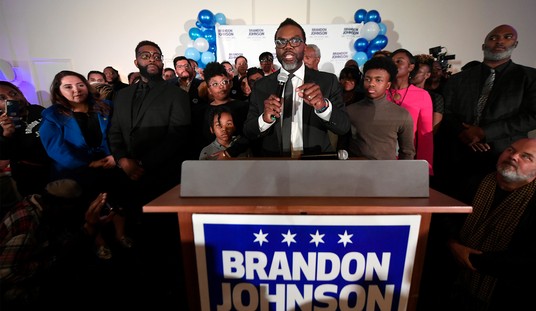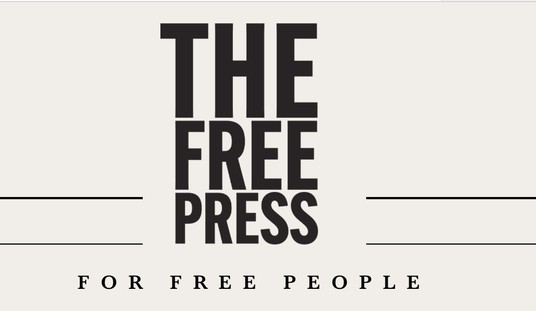Old and busted, legacy media edition: Layers of fact checkers and editors. New hotness: “There was this one time, in band camp …” Yet another big, splashy mainstream media story has collapsed, although the damage from New York Magazine’s tall tale of a teen-genius stock trader and the New York Post’s follow-up is entirely limited to the two publications’ reputations. Jessica Pressler wrote this weekend that Mo Islam, a 17-year-old student, had amassed a $72 million fortune during his participation in a high-school trading club, apparently without asking some basic questions about how a minor could trade and how anyone could have possibly made that much money in such a short period of time.
The answer: It’s all a hoax. The New York Observer did the fact-checking that neither NY Magazine or the Post bothered to do, and found at the center a couple of teens who made up rumors out of whole cloth:
Monday’s edition of New York magazine includes an irresistible story about a Stuyvesant High senior named Mohammed Islam who had made a fortune investing in the stock market. Reporter Jessica Pressler wrote regarding the precise number, “Though he is shy about the $72 million number, he confirmed his net worth is in the “’high eight figures.’” The New York Post followed up with a story of its own, with the fat figure playing a key role in the headline: “High school student scores $72M playing the stock market.”
And now it turns out, the real number is … zero.
In an exclusive interview with Mr. Islam and his friend Damir Tulemaganbetov, who also featured heavily in the New York story, the baby faced boys who dress in suits with tie clips came clean. Swept up in a tide of media adulation, they made the whole thing up.
Speaking at the offices of their newly hired crisis pr firm, 5WPR, and handled by a phalanx of four, including the lawyer Ed Mermelstein of RheemBell & Mermelstein, Mr. Islam told a story that will be familiar to just about any 12th grader—a fib turns into a lie turns into a rumor turns into a bunch of mainstream media stories and invitations to appear on CNBC.
As late as Monday, Pressler publicly pronounced herself satisfied with her own reporting. NY Magazine also stuck by the story, even while the Observer put its subject on the record explaining it was all nonsense. Pressler and the magazine claimed to have seen bank records with an astronomical balance, but the two students at the center of the hoax say all of the trades were simulated. Presumably, so was the bank balance.
The Observer’s Ken Kurson offers a little advice to reporters who come across too-good-to-be-true stories, especially from high-school students:
No one asked for my opinion, but I’m going to provide it anyway, having sat with these kids for a good bit on a tough day. They got carried away. They’re not children. But they’re not quite adults, either, and at least Mr. Islam was literally quaking as we spoke. So yeah, they probably should have known better. But New York and the New York Post probably should have, as well. This story smelled fishy the instant it appeared and a quick dance with the calculator probably would have saved these young men—and a couple reporters—some embarrassment.
Kurson doesn’t put it quite as plainly as this, but here’s some better advice: Check the facts. There is a perverse relationship in both this and the Rolling Stone’s “Jackie” narrative in which the more outrageous the claims became, the less the reporter felt compelled to perform due diligence on them. The story was just too good to check in both cases. But that’s where the supposed “layers of fact checkers and editors” are supposed to work — to keep hoaxes and fabulism from gaining credence in mainstream magazines. It’s not just the reporters in these cases who are at fault, but the entire publication chain.
Speaking of Rolling Stone, Erik Wemple punched another hole in the “Jackie” narrative yesterday evening:
The controversy around the alleged gang rape has overshadowed other claims in the story by writer Sabrina Rubin Erdely. In addition to describing Jackie’s alleged assault, the Rolling Stone piece follows her through interactions with rape survivors and with the university administration. Thanks to her “ever expanding network,” writes Erdely, “Jackie had come across something deeply disturbing: two other young women who, she says, confided that they, too, had recently been Phi Kappa Psi gang-rape victims.” In May 2014, the story notes, Jackie apprisedAssociate Dean of Students Nicole P. Eramo of these gang-rape allegations. Erdely breaks down the cases: “One, she says, is a 2013 graduate, who’d told Jackie that she’d been gang-raped as a freshman at the Phi Psi house. The other was a first-year whose worried friends had called Jackie after the girl had come home wearing no pants. Jackie said the girl told her she’d been assaulted by four men in a Phi Psi bathroom while a fifth watched,” writes Erdely in the story.
What has come of these claims? …
If these allegations followed the same pattern as those regarding the seven-man rape, Rolling Stone needed no corroboration beyond Jackie’s statements. For evidence that the magazine didn’t fully corroborate the other claims, here’s how it represents the reporting about the two other alleged victims: “(Neither woman was willing to talk to RS.)”
In this story, Rolling Stone has vested such disclosures with vast possibilities. Many readers might suppose that “neither woman was willing to talk to RS” means that Erdely called and e-mailed them, but they refused to be interviewed. We know from other parts of the story, however, that such conclusions may be wrong. For instance, “A Rape on Campus” notes that one of Jackie’s friends — the pseudonymous “Randall” — “declined to be interviewed.” The Post later reported that “Randall” “was never contacted by Rolling Stone and would have agreed to an interview.” Also, Rolling Stone has conceded that it didn’t contact Jackie’s alleged assailants in deference to her wishes.
So: How does Rolling Stone know that these other alleged victims of gang rape at Phi Kappa Psi were unwilling to talk? We’ve asked the magazine about that, and they haven’t gotten back to us about it.
This looks like another case in which a reporter with an axe to grind found a story she liked to be just “too good to check,” along with her editors all the way up the chain at Rolling Stone. Unlike the teen-genius trader story, though, this one did real damage to people outside a newsroom, and that damage is continuing. It’s why fact checks and healthy skepticism need to be employed before a media outlet prints stories, and not afterward.
Update: Give NYM some credit for a complete and quick mea culpa:
A source close to the Islam family told the Washington Post that the statements were falsified. We were duped. Our fact-checking process was obviously inadequate; we take full responsibility and we should have known better. New York apologizes to our readers.
“We were duped.” I wonder how much longer it will take for Rolling Stone to admit to that.







Join the conversation as a VIP Member